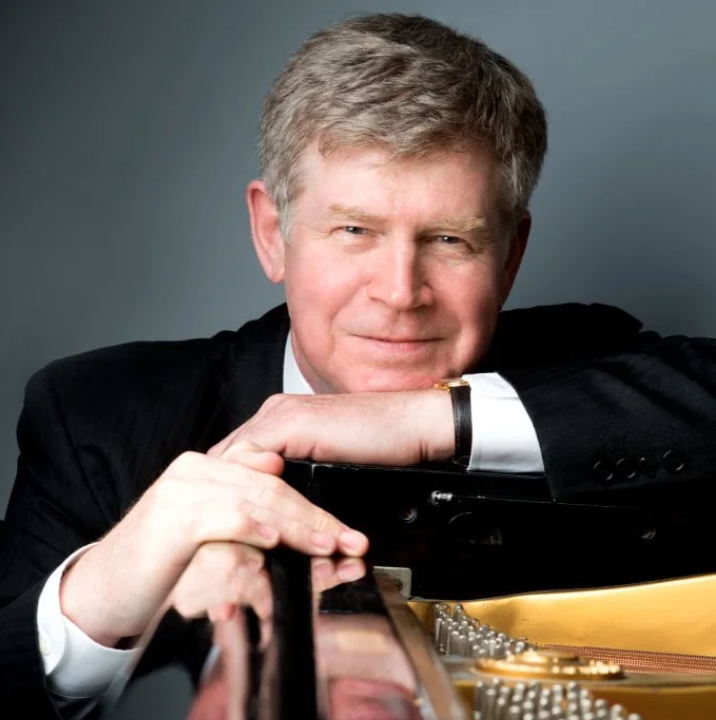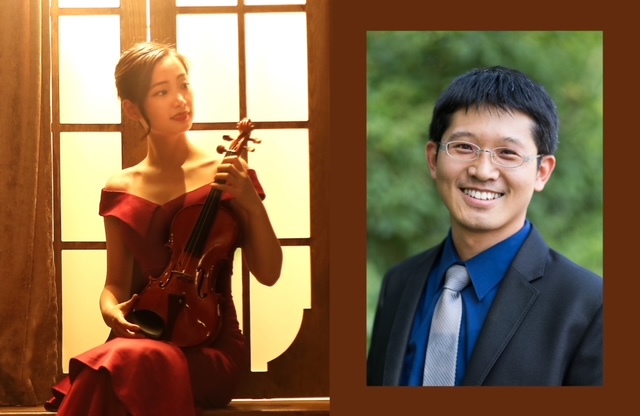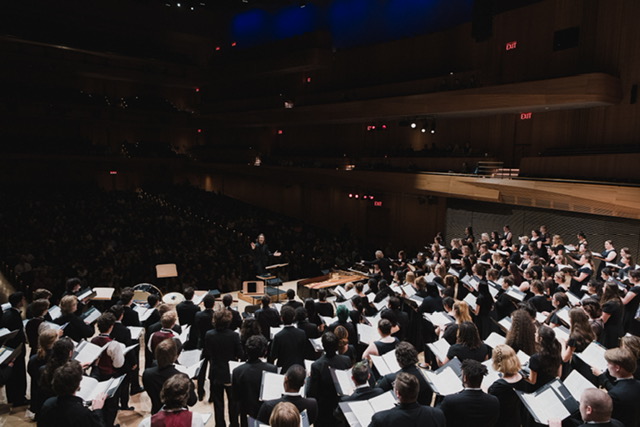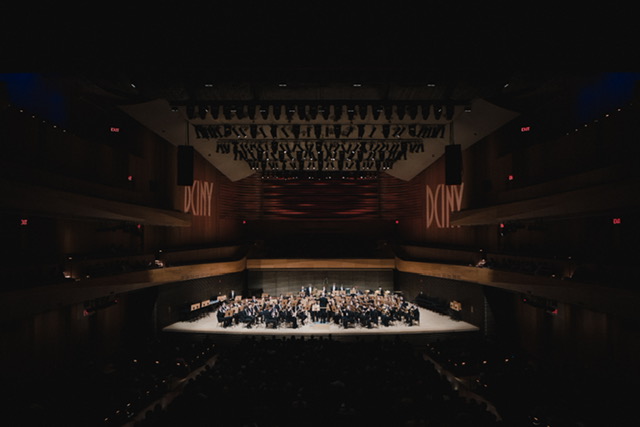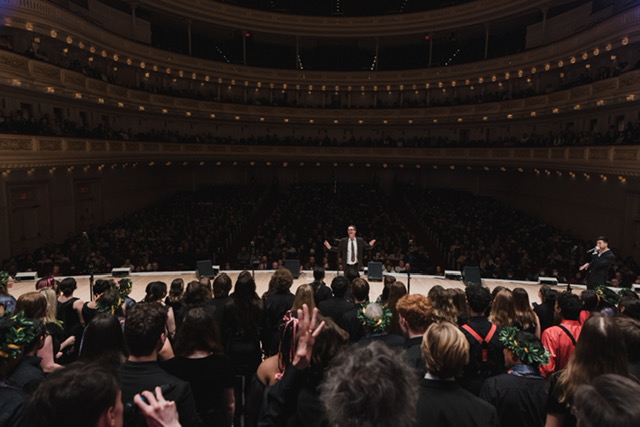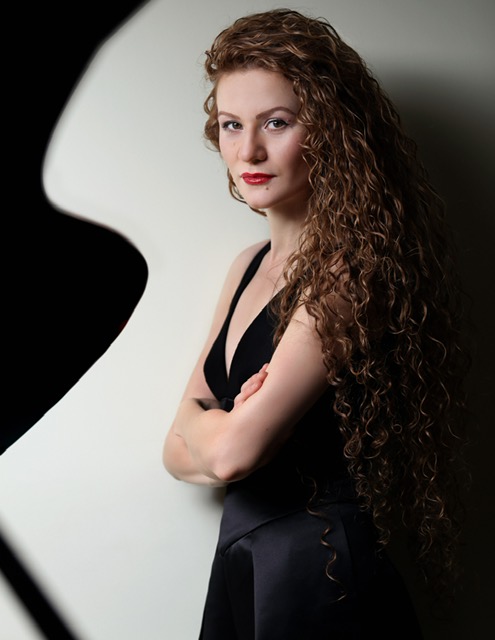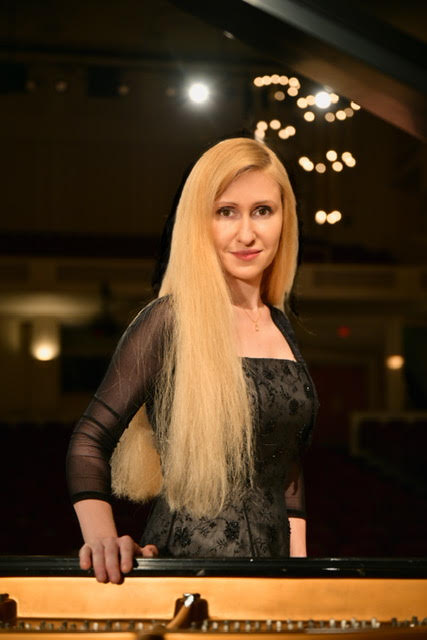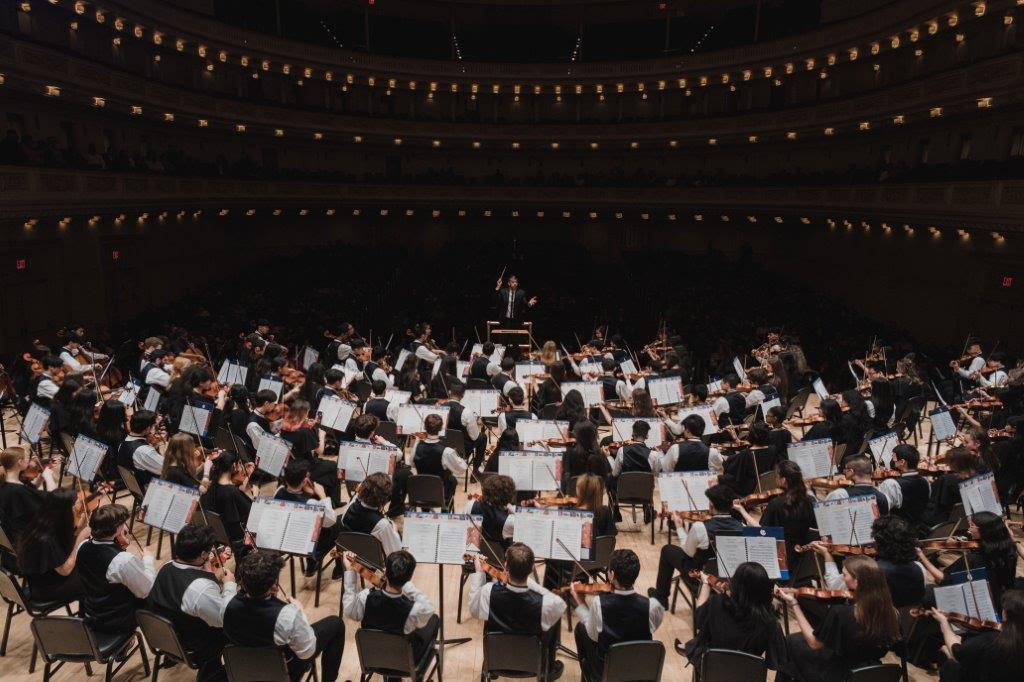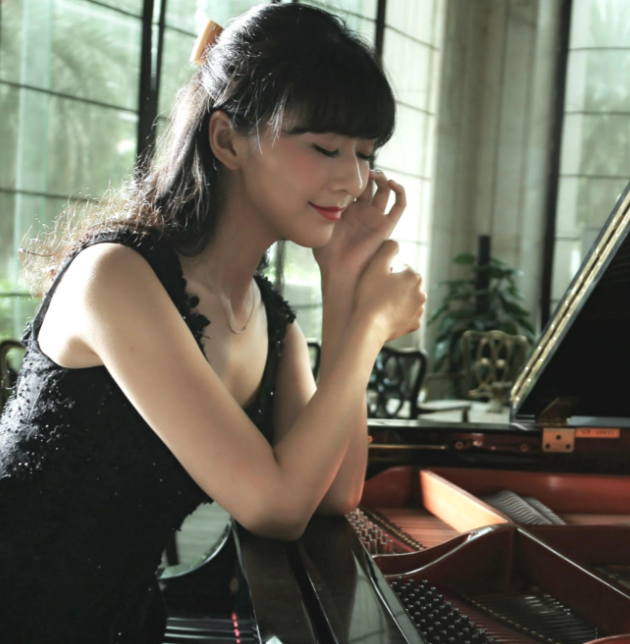Ian Hobson, piano
Tenri Cultural Institute, New York, NY
April 20, 2023
Don’t let his modesty and British understatement fool you – pianist and conductor Ian Hobson is a titan. Among the flurry of artists with press releases billing them as “renowned,” there are those who actually are renowned such as Ian Hobson, with a discography of over 60 recordings (on labels such as Arabesque, EMI, Albany, Hyperion, and his own label Zephyr), performances with the world’s major orchestras (Philadelphia, Chicago, Baltimore, London Philharmonic, Hallé Orchestra to name a few), conducting work as well (Stuttgart Chamber Orchestra, English Chamber Orchestra, and others), and appointments as teacher and adjudicator for decades (Florida State University, University of Illinois at Urbana-Champaign). The abundant skill and unflappability that won Mr. Hobson the Leeds Competition in 1981 have had staying power, serving him well through decades of complete cycles of numerous composers (live and recorded) – and judging by his all-Schumann program at the Tenri Cultural Institute this week, he is still going strong.
It is extremely inspiring to hear Mr. Hobson play live, especially as one who spent college and grad years in the eighties and early nineties listening to numerous recordings by him. Young musicians who grow up now taking the Internet for granted might not appreciate what a gift it was then (without YouTube, etc.), that when one needed to hear a work in a reliable, thoughtful, and technically top-flight performance without eccentricities, there, in various libraries, were usually voluminous sets by Ian Hobson. Given the relative rarity of live all-Schumann recitals, Mr. Hobson is still filling a void, particularly in recitals placed within a historical framework (with helpful program notes by Richard Dyer ensuring this ). His Tenri program offered Humoreske, Op. 20, Nachtstücke, Op. 23, and the Drei Romanzen, Op. 28. The concert was entitled “Love and Nature II” (“Love and Nature I” having been covered here Schumann: Love and Nature I). Almost a musical counterpart to some reality series that one might “binge-watch,” it invites the title “Schumann: Season 1839,” offering an amazing window onto the breathless mania, grief, and romance that saturated that year for Schumann, programmed from latest to earliest. The Romanzen closed the year 1839 telling of an imminent marriage to Clara, but only after a turbulent journey in earlier months.
Before opening with the Romances, Mr. Hobson explained that due to the size of the hall and the desire to avoid stridency from the piano, the piano lid would be lowered onto the half stick. In keeping with this spirit of comfort and intimacy of musical gathering (despite having the music committed to memory), he would also be using the score. The half stick was a wise decision, because the sound was still quite robust as it was, as one heard from the first Romanze onward. As for using the score, there is almost always a certain unsettled quality that comes with that, perhaps partly from the unpredictability of having a page-turner nearby, so though it is hard to believe that this Luddite writer is advocating digital tablet page-turning (having never tried it), it might be worth a shot if playing with the score will become the norm. A few turns had perilous moments (the Humoreske‘s Intermezzo octaves section for example), and most glitches through the evening might also be chalked up to that unsettled feeling. Beyond that, there is perhaps nothing quite as conducive to inspired solo playing as solitude onstage.
At any rate, the famous second Romanze was lovely with its full singing duet melodies, and the third found the spirit of Schumann’s Florestan alive and well. Interestingly Mr. Hobson commented on the influence on these of William Sterndale Bennett’s Romances (not just Clara Schumann as is often repeated). Being unfamiliar with those, this reviewer went to look for them and immediately found – you guessed it – recordings of them by Ian Hobson. One can only envy the lucky students of this professor who has such a large repertoire!
Moving backward in time from the December 1839 Romanzen, the Op. 23 Nachtstücke, composed in late March of that year, express presentiments of death as Robert was losing his brother Eduard. Originally entitled “Corpse Fantasy” (and renamed on Clara’s recommendation), its four pieces are fraught with rhythms of funeral marches, clashing uneasily with the boisterousness of the living. Mr. Hobson brought clarity to the madness. The first movement (Mehr langsam, oft zurückhaltend) did emerge as quite hardy for Schumann at his most neurotic (and a tad brisk for its funereal subject), but because of ultra-clear thematic statements, it made one more keenly aware of the theme as transformed later, with Schumann’s poignant omission of several melody notes to symbolize loss. The second piece (Markirt und lebhaft) had just the right frenetic energy to suggest the original title of the piece “Strange Company,” and the third piece (originally “Nocturnal revelries”) had special high points for this listener, such as where the chordal playing cedes to streaming sequences – played with perfect balance and a singing tone. The fourth piece closed the work admirably with a final return to a more pensive spirit. This whole set is a work in which one can get lost between extremes of almost catatonic grief and nervous surface energy, but somehow Mr. Hobson balanced it all with the mastery of a storyteller. Often his storytelling verged on matter-of-factness, with no heart-on-sleeve projection or pained empathy, but he kept the momentum going in this problematic work, and that went a long way for this listener (who, for full disclosure, never loved this set, despite loving most of Schumann’s output). Thankfully this performance brought me closer to embracing it.
After intermission, we heard Humoreske, composed earlier in that March of 1839, before Schumann lost his brother. It is bursting with joyous creativity, as Schumann’s letters from that time to Clara also describe. In it lies the full spectrum of Schumann moods in rapid alternation, and Mr. Hobson played it with masterful grasp of each one. His first fast theme (Sehr rasch und leicht) was irresistible, and the seemingly premature repetition mid-theme, as if Schumann is interrupting himself in his excitement, was perfection. He even somehow managed to evoke the famous (unplayed) “inner voice” of the hastig section (which I like to call the “hastig situation”- no tomatoes please), through skillful emphasis of outer voices. Later in this section before the move to D minor, he achieved amazing bell-like sonorities, and the return to pianissimo was quite special. I have to echo here the words of my New York Concert Review colleague in the feeling that there could be more of these special moments, but I did love the ones we had. Meanwhile, it was a joy to behold the mastery of a pianist for whom so much comes so easily with minimal motion or commotion – and seemingly not a drop of sweat.
All in all, it was a memorable concert and a privilege to attend, as those present were undoubtedly aware. A standing ovation was rewarded with Liszt’s well-known transcription of Schumann’s song Widmung, dedicated on this occasion to Mr. Hobson’s wife who was present and whose recording of it was played at their wedding a year ago – a heartwarming personal touch.

